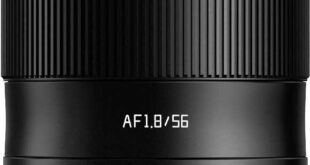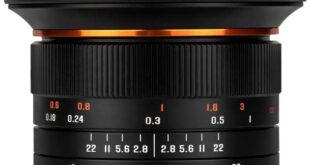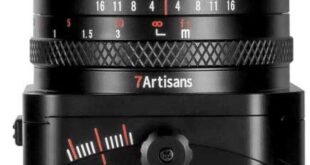Lumix continues to expand its full-frame mirrorless camera system. The Panasonic Lumix S1, the S1R, and the S1H are followed by the latest Panasonic S5, which is aimed primarily at beginners without any serious compromises in terms of technology and equipment. In addition, the new Lumix S5 is smaller, lighter, cheaper, and offers a classic operating concept with dials, similar to the GH5.
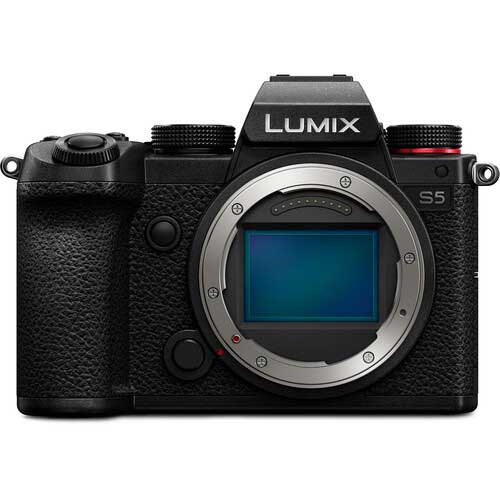
Due to the smaller dimensions and the lighter construction, the Lumix S5 has become handier and more user-friendly and paired with the display on the top, which is characteristic of the S1 models. The screen that can be folded out to the side and the better-placed video shutter at the top of the S5 is particularly interesting for video creators and vloggers.
Like the Lumix S1, the new Panasonic S5 comes with the 24.2 megapixel CMOS sensor in 35mm full format, but now without a low-pass filter. It promises advances in image resolution, image stabilization, and autofocus and, in line with the current trend towards photo-video hybrid cameras, offers numerous ambitious video functions. According to Panasonic, this makes the Lumix DC-S5 equally suitable as a photo or vlog camera.
The Panasonic Lumix DC-S5 housing with its dust- and splash-proof construction made of a solid magnesium alloy, measuring 133 x 97 x82 mm and weighs 714 g including battery, is not only significantly smaller and lighter than the S1 but even than the GH5 in the micro four-thirds format. Thus, Panasonic has impressively taken the wind out of the sails of the criticism of the size of the previous S models. The operation of the S5 is the same as that of the S1, even if the extra LCD display on the top right of the camera is missing.
Despite the more compact design, Panasonic has succeeded in using the energy-saving processor and double heat-conducting layers on the upper and lower surfaces of the S5 to ensure effective heat dissipation and thus enable continuous video recording with 4K 30p and 8-bit without interruption.
The 24-megapixel sensor works with dual native ISO technology for low noise values even at high sensitivities. The change between the two analog Low-ISO and Low Noise/High-ISO circuits takes place automatically depending on the lighting situation. This means that recordings with a maximum sensitivity of ISO 51,200 are possible, in the Extended ISO range even up to ISO 204,800. The dynamic range should be a maximum of 14 EV steps with V-Log. In the case of photos, thanks to the movably mounted sensor in high-resolution mode, eight photos with sensor-shift are possible for photos in four times the resolution of 96 megapixels in JPEG and RAW format. The dual image stabilization with 5 axes promises 6.5 steps slower shutter speeds from freehand, even in the telephoto range.
One of the extended features of the Panasonic S5 is the LiveView composite mode. An image is created from several interval shots in which the dark areas remain unchanged and only moving bright details, such as fireworks or a starry sky, are brought together in one image.
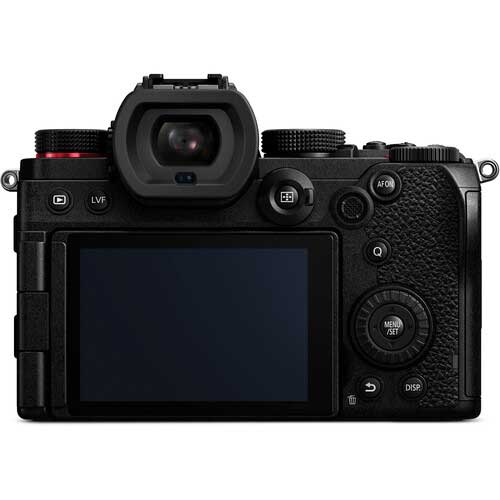
Panasonic has further improved the DFD (Depth-From-Defocus) technology quickly calculates the distance to subjects and adjusts the focusing position in as little as 0.08 seconds, with sensor and lens communication occurring at rates up to 480 fps. It also features 225 AF areas, which provide excellent control over where the camera will focus. Additionally, supporting working in low-light conditions, a Low Light AF feature enables accurate AF performance down to -6 EV.
The Lumix S5 takes picture series with a maximum of 7 pictures per second with pre-focusing, with autofocus tracking it is still 5 fps. Focus bracketing, post focus, and focus stacking are also possible. The 6K photo mode is good for fast series of up to 30 fps.
When it comes to video recordings, the Panasonic Lumix S5 offers the target group “video content creators” a lot of what distinguishes the S1 series. Hybrid Log-Gamma allows HDR recordings. 4K videos are possible with a maximum of 4K 60p and 4: 2: 0 or 30p with 4: 2: 2 10-bit. In Full HD format, the S5 offers in “S&Q” mode, selectable on the exposure function wheel, 7.5x slow motion, or 60x timelapse at 180 fps. In 4K, 2.5x slow motion and 30x time-lapse are possible. The S5 also allows the recording of anamorphic 4K video images in 4: 3 format, from which rectified images can be generated in CinemaScope mode with an aspect ratio of 2.35: 1.
The video signal can be played with 10-bit via HDMI and recorded internally at the same time. A microphone and headphone connection, optional XLR adapter, manual sound level control, and selectable sound output to ensure good sound.
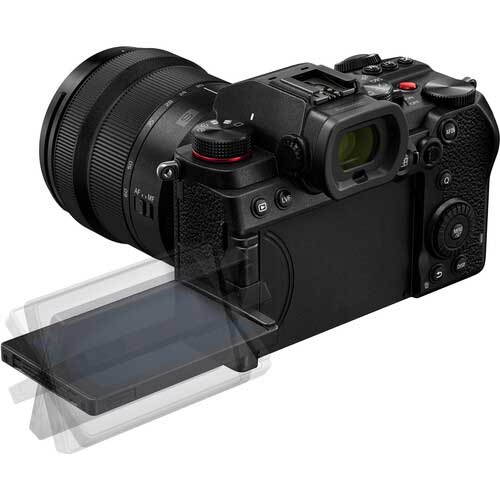
With the Panasonic Lumix DC-S5, the image is checked either via the electronic viewfinder or the LCD monitor. With 800,000 RGB pixels, the OLED viewfinder has a significantly lower resolution than the S1, but it draws a sharp image. Its frame rate is 120 or 60 fps and it shows 100 percent of the image field at 0.74x magnification. The 7.5 cm LCD touchscreen display, which can be freely rotated and swiveled, shows a 100 percent image with a good 600,000 RGB pixels. Switching between viewfinder and display takes place automatically via an eye sensor.
It is saved on two SD cards, one SD slot works with UHS-I and –II (U3 / V90), and the second one with UHS-I U3. USB 3.1 Type C, Wi-Fi 2.4 / 5GHz, and Bluetooth are available for communication. Battery charging or constant power supply is also carried out via USB. Computer-controlled tethered shooting is possible with an extra app. The battery life should be sufficient for at least 440 pictures, an optional battery grip increases the capacity.
Panasonic promises some updates with further video functions and the new image styles L.MonochromeS and L.ClassicNeo by the end of 2020. The Panasonic Lumix S1 models should also receive the AF improvements of the S5 by the end of 2020 via update.
Prices and availability
The Panasonic Lumix S5 Mirrorless Camera has been priced at $1,997.99 for the body only and with a 20-60mm lens kit cost $2,297.99, and now available to pre-order via the Amazon.com and Bhphotovideo.com websites. It will be available from September 21, 2020.
 Technology News, Reviews and Buying Guides review, monitor review, tablet review, laptop review, mobile review, smartphone review, buying guide,
Technology News, Reviews and Buying Guides review, monitor review, tablet review, laptop review, mobile review, smartphone review, buying guide,
